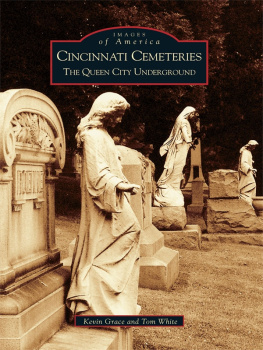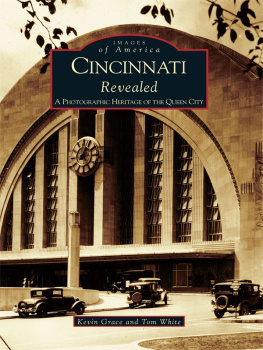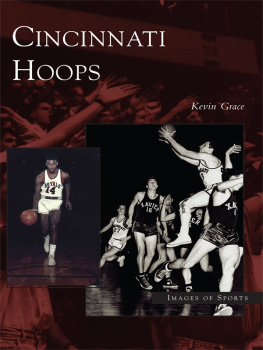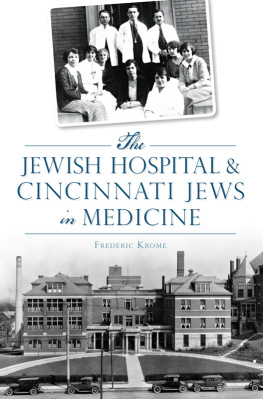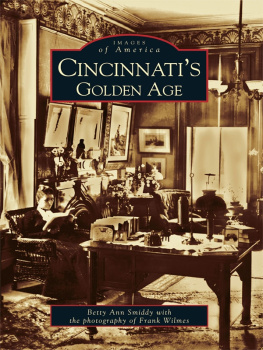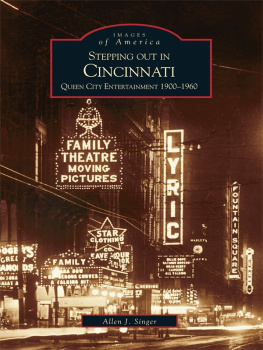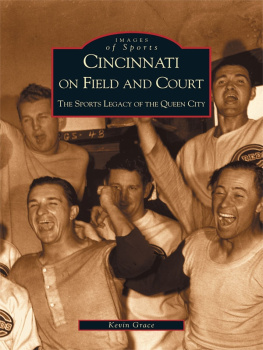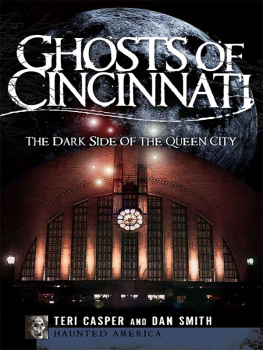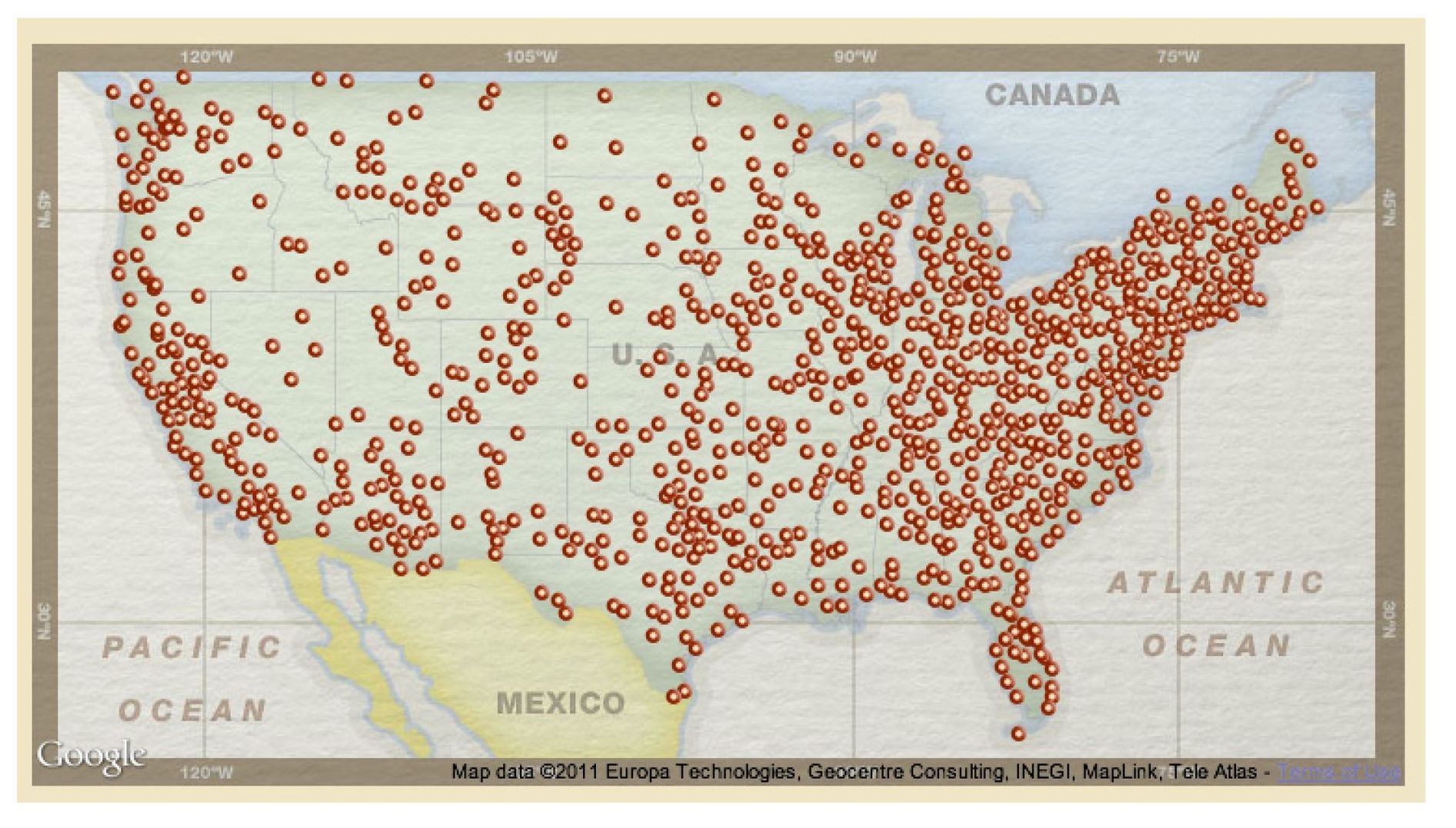Thanks for assistance and information to Kate Barone, Greg Hand, Linda Hand, Anna Heran, Steven Schwartz, Don Heinrich Tolzmann, Joe Wendt of New St. Josephs Cemetery, the staff of the Cincinnati Historical Society with special thanks to Tina Bamert, our editor at Arcadia, Melissa Basilone, for her patience and encouragement, and all the Cincinnati cemetery employees who maintain the physical environments that offer inspiration to those who visit and comfort to those who mourn.
T.W.
NOTES FOR FURTHER READING
For excellent sources on the topics of death and dying in America, see Mary Roachs Stiff: The Curious Lives of Human Cadavers (New York, NY, 2003), Margaret M. Coffins Death in Early America: The History and Folklore of Customs and Superstitions of Early Medicine, Funerals, Burials, and Mourning (Nashville, TN, 1976), and of course the classic, The American Way of Death by Jessica Mitford (New York, NY, 1963). The literature on the curious history of body snatching continues to grow, and there are a number of readable and informative books. Among the best are Suzanne M. Schultzs Body Snatching: The Robbing of Graves for the Education of Physicians in Early Nineteenth Century America (Jefferson, NC, 1991), Death, Dissection, and the Destitute by Ruth Richardson (London, 1987), and James Moores Balls The Sack Em-Up Men: An Account of the Rise and Fall of the Modern Resurrectionists (London, 1928).
For the general history of Cincinnati, two very good narratives that not only contain wonderful anecdotal accounts of local heritage, but place events and people in context are Alvin F. Harlows The Serene Cincinnatians (New York, NY, 1950) and Cincinnati Then and Now by Iola Hessler Silberstein (Cincinnati, OH, 1982). Silbersteins work in particular, along with Zane Millers Boss Coxs Cincinnati: Urban Politics in the Progressive Era (New York, NY, 1968) do an outstanding job in showing the political development of the city and the men and women who were involved in it.
Other histories worth a look because they contain profiles of prominent Cincinnatians (although they are in the manner of the late-19th-century civic mug books) are Cincinnati Resources (Cincinnati, OH, 1891), George W. Englehardts Cincinnati: The Queen City (Cincinnati, OH, 1901), and George Mortimer Roes Cincinnati: The Queen City of the West (Cincinnati, OH, 1895). More contemporary and incisive books include a WPA guide, They Built a City: 150 Years of Industrial Cincinnati (Cincinnati, OH, 1938), John Clubbes Cincinnati Observed: Architecture and History (Columbus, OH, 1992), The Bicentennial Guide to Greater Cincinnati by Geoffrey J. Giglierano and Deborah A. Overmyer (Cincinnati, OH, 1988), the reprinted WPA Guide to Cincinnati (Cincinnati, OH, 1987), and Daniel Hurleys exceptional Cincinnati: The Queen City (Cincinnati, OH, 1988).
On specific aspects of people and events mentioned in this book are Tim Holians excellent two-volume history, Over the Barrel: The Brewing and Beer Culture of Cincinnati (St. Joseph, MO, 2000 and 2001), which in its discussion of brewers and brewing says so much about other facets of local heritage; Don Heinrich Tolzmanns German Heritage Guide to the Greater Cincinnati Area (Milford, OH, 2003), essential in outlining the contributions of German Americans to the region; and Ellis Rawnsleys A Place Called Terrace Park (Cincinnati, OH, 1992). Rawnsleys history of a suburban community to the east of Cincinnati gives the most concise and readable account of the John Robinson Circus.
To read about the Pearl Bryan murder case in detail, see a book written at the time, Pearl Bryan, or: A Fatal Ending; A Complete History of the Lives and Trials of Scott Jackson and Alonzo Walling, Both Being Sentenced to Death (Cincinnati, OH, 1896), Anthony W. Kuhnheims The Pearl Bryan Murder Story (Alexandria, KY, 1996), and Anne B. Cohens Poor Pearl, Poor Girl! The Murdered Girl Stereotype in Ballads and Newspaper (Austin, TX, 1973) are also helpful. Cohens classic study traces how a local story became part of a national ballad tradition.
Otto Juettners book Daniel Drake and His Followers: Historical and Biographical Sketches (Cincinnati, OH, 1909) is still the most useful reference volume for the early medical and health history of Cincinnati, almost a century after its publication. Four contemporary accounts of cholera from the 19th century are Daniel Drakes A Practical Treatise on the History, Prevention, and Treatment of Epidemic Cholera (Cincinnati, OH, 1832), The Cholera in Cincinnati: Or, a Connected View of the Controversy Between the Homeopathists and the Methodist Expositor by Samuel A. Latta (Cincinnati, OH, 1850), Orin E. Newtons book, An Essay on Asiatic Cholera, As it Appeared in Cincinnati, O., in the Years 1849, 1850, and 1866 (Cincinnati, OH, 1867), and Cholera in Cincinnati in 1873 by J.J. Quinn (Cincinnati, OH, 1874).
General books that are indispensable for beginning research on Cincinnati cemeteries are the 15 volumes compiled by the Hamilton County Genealogical Society, Hamilton County, Ohio Burial Records , edited by Mary H. Remler. Published over the years since 1984, each volume takes an individual cemetery, provides a brief history of it, and lists the burials found there. On the history of Spring Grove Cemetery, there have been many reports issued by the trustees and association over the past 150 years. One of the most useful of the early ones is Spring Grove Cemetery: Its History and Improvements, with Observations on Ancient and Modern Places of Sepulture (Cincinnati, OH, 1869). Don Heinrich Tolzmann has also edited a previously unpublished biography of Adolph Strauch, Spring Grove and Its Creator: H.A. Rattermanns Biography of Adolph Strauch (Cincinnati, OH, 1988, first written in 1905). By far, the best account of the history and design of Spring Grove is the book by Blanche M.G. Linden in 1995 as a special issue of Queen City Heritage (Volume 53, Numbers 1/2), Spring Grove: Celebrating 150 Years . Blanche Linden-Ward also wrote a video history of the cemetery, Nature by Design: The Art and Landscape of Cincinnatis Spring Grove (Cincinnati, OH, 1987). Linden-Ward is the foremost historian of garden cemeteries and her writings on Spring Grove are very well done, and outstanding sources for tracing the landscaping and design philosophies of its superintendents.
Find more books like this at
www.imagesofamerica.com
Search for your hometown history, your old

